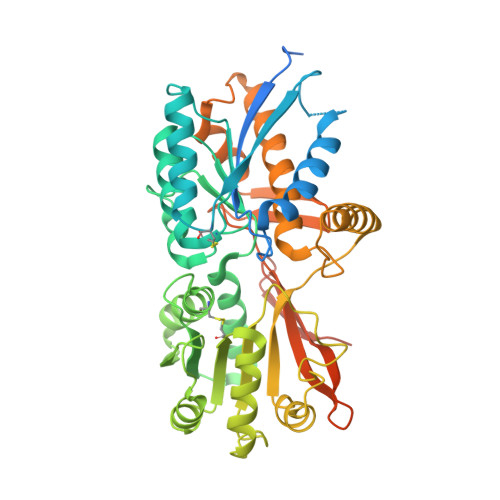Structural determinants of natriuretic peptide receptor specificity and degeneracy.
He, X.L., Dukkipati, A., Garcia, K.C.(2006) J Mol Biology 361: 698-714
- PubMed: 16870210
- DOI: https://doi.org/10.1016/j.jmb.2006.06.060
- Primary Citation of Related Structures:
1YK0, 1YK1 - PubMed Abstract:
Cardiovascular homeostasis and blood pressure regulation are reliant, in part, on interactions between natriuretic peptide (NP) hormones and natriuretic peptide receptors (NPR). The C-type NPR (NPR-C) is responsible for clearance of NP hormones from the circulation, and displays a cross-reactivity for all NP hormones (ANP, BNP, and CNP), in contrast to other NPRs, which are more restricted in their specificity. In order to elucidate the structural determinants for the binding specificity and cross-reactivity of NPR-C with NP hormones, we have determined the crystal structures of the complexes of NPR-C with atrial natriuretic peptide (ANP), and with brain natriuretic peptide (BNP). A structural comparison of these complexes, with the previous structure of the NPR-C/CNP complex, reveals that NPR-C uses a conformationally inflexible surface to bind three different, highly flexible, NP ligands. The complex structures support a mechanism of rigid promiscuity rather than conformational plasticity by the receptor. While ANP and BNP appear to adopt similar receptor-bound conformations, the CNP structure diverges, yet shares sets of common receptor contacts with the other ligands. The degenerate versus selective hormone recognition properties of different NPRs appears to derive largely from two cavities on the receptor surfaces, pocket I and pocket II, that serve as anchoring sites for hormone side-chains and modulate receptor selectivity.
- Department of Microbiology & Immunology, Howard Hughes Medical Institute, Stanford University School of Medicine, Fairchild D319, 299 Campus Drive, Stanford, CA 94305-5124, USA.
Organizational Affiliation:




















